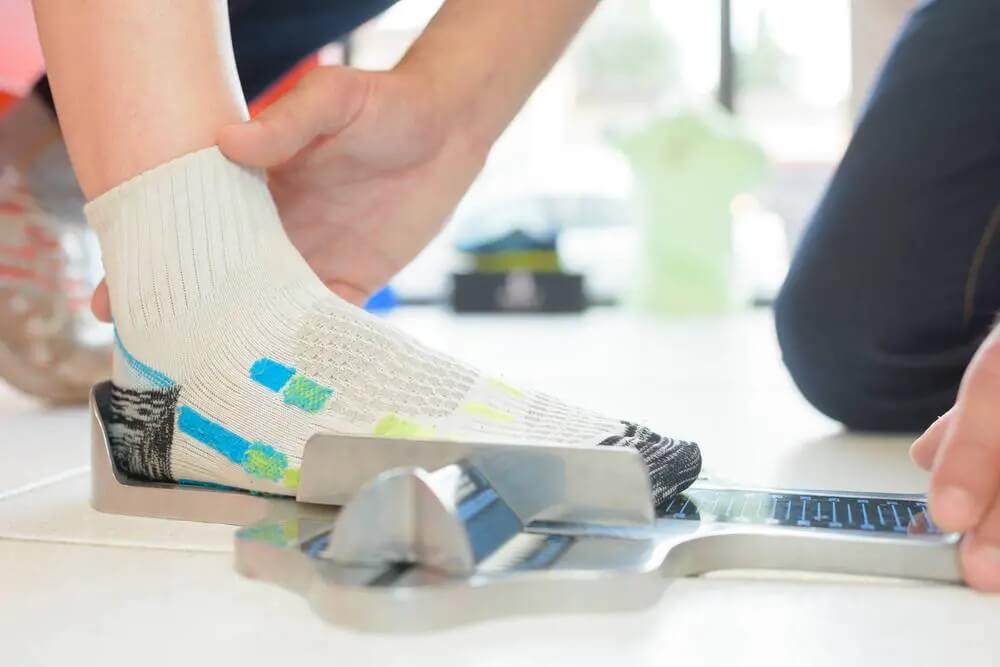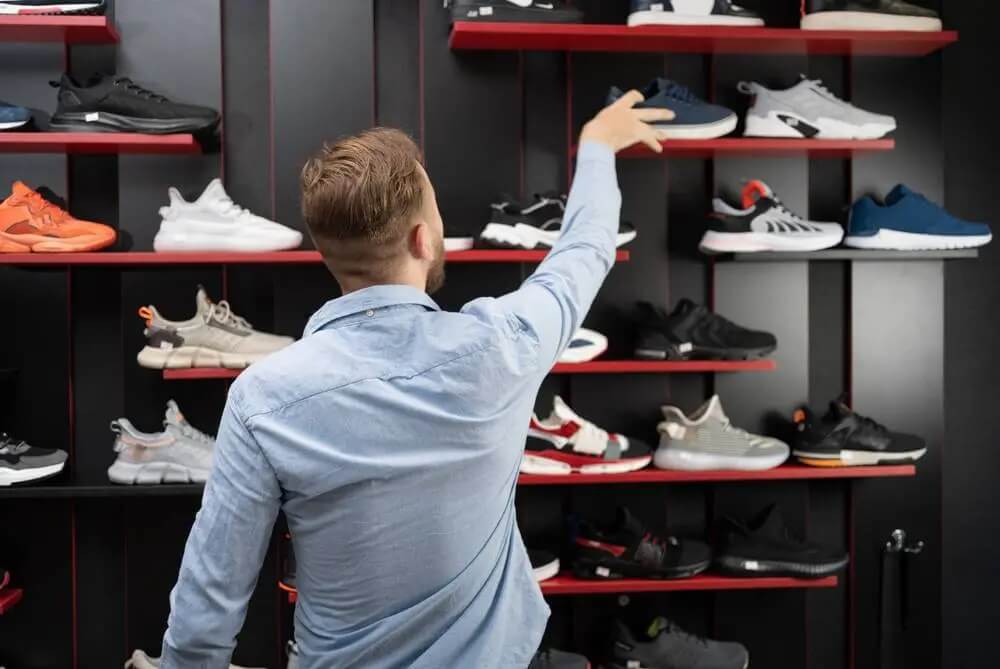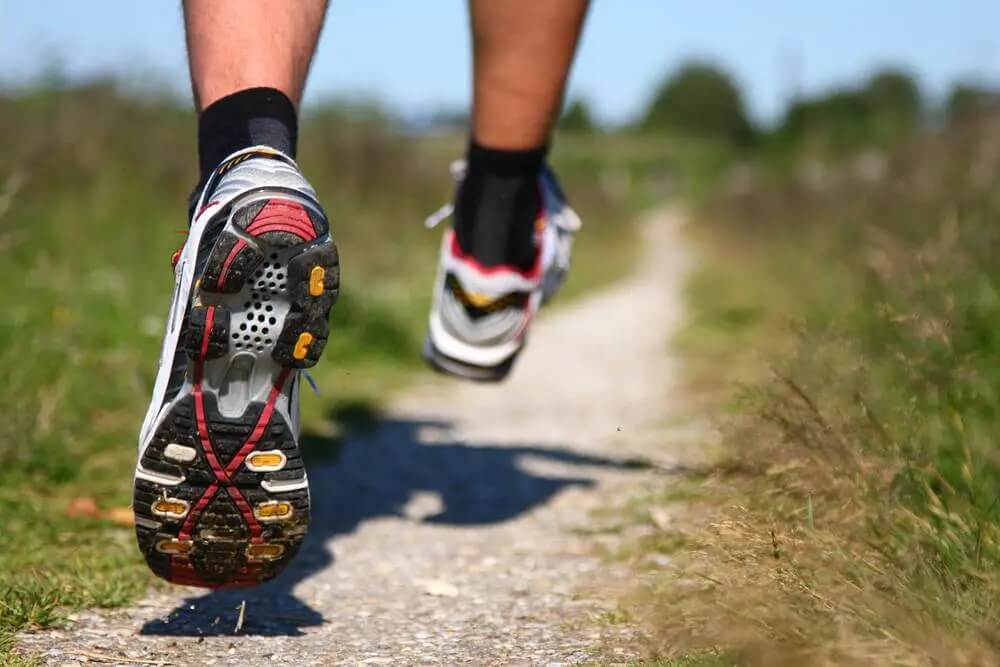Improper running shoes can be a safety hazard, so how should running shoes fit? We’ve gathered everything you need to know so you can find the perfect pair.
Finding the perfect fit for running shoes is essential to ensure comfort, support, and injury prevention. The right fit allows for optimal performance while reducing the risk of discomfort, blisters, or other issues. There are several aspects to consider, including length, width, and overall shape of the shoe, in order to find the perfect fit.
When trying on running shoes, it is crucial to have a thumb’s width of space between your toe and the end of the shoe. Additionally, the midfoot and heel should have a snug but not tight fit to provide support and stability during your runs.
Identifying the correct shoe size, including length and width, is a vital step in ensuring the desired fit. By focusing on these elements, you can select the perfect pair of running shoes to enhance your running experience.
Contents
Foot Measurement

Accurate foot measurements are crucial to finding the ideal fit for your running shoes. In this section, we will discuss length, width, and arch type to help guide you through the process.
Length
Measuring the length of your foot is the first step in determining your shoe size. Place your foot on a piece of paper and trace around it, making sure to keep the pen or pencil vertical. Measure from the longest toe to the heel and compare your measurement to standard shoe size charts.
Then, take the insole out of the shoe and stand on it to ensure the size and shape match your foot. Sufficient space for your toes is also vital. There should be a thumb’s width of space between your toe and the end of the shoe.
Width
After determining your shoe’s length, assess the width sizing. Shoes come in different width sizes, ranging from narrow to extra wide. Measuring the circumference of your foot at the widest part can help you find the appropriate shoe width.
Keep in mind that proper shoe fit includes enough space for the foot to expand and move during running. Thus, your shoes should not feel tight or constricting but comfortably snug at the midfoot and heel.
Arch Type
Identifying your arch type is essential, as it may determine the type of support your running shoes should provide. There are three primary arch types:
- Normal arch: Typically requires a running shoe with moderate support and cushioning.
- Flat arch: Often needs a shoe with added stability and motion control.
- High arch: Usually benefits from a shoe with extra cushioning and flexibility.
To identify your arch type, perform the “wet test.” Wet your foot, step on a piece of paper, and observe the imprint. A normal arch will leave a distinct curve, a flat arch will show almost the entire sole and a high arch will have a very narrow curve or gap in the middle.
Picking The Right Shoe

Finding the perfect running shoe requires considering various factors, such as your unique foot shape, running style, and personal preferences. Let’s explore the different categories of shoes and how to choose between brands and models.
Running Shoe Categories
Running shoes are usually categorized based on the level of support and cushioning they provide. Three main categories include:
- Neutral: Best for runners with normal to high arches and a neutral foot motion.
- Stability: Ideal for runners with mild to moderate overpronation, providing additional arch support.
- Motion Control: Suitable for runners with severe overpronation or flat feet, offering the most arch support and control.
Understanding your foot type and running mechanics will help you pick the right category for your needs. A professional shoe fitting or gait analysis might prove helpful in making informed decisions.
Brands And Models
After determining the appropriate shoe category, you can explore various brands and models that align with your preferences. Each brand offers unique features, designs, and technologies to cater to different needs.
Top running shoe brands include:
- Nike
- Adidas
- Brooks
- ASICS
- Saucony
- New Balance
Each model, even within the same brand, might fit differently. So, experimenting with different models and lacing techniques, considering construction materials, and seeking recommendations or reviews can help you find the perfect running shoe. Before buying new shoes, check out our explainer on can running shoes go in the dryer.
Trying On Shoes
Sizing And Fit
When trying on running shoes, it’s important to find the right balance of snugness and comfort. A properly fitting shoe should feel snug in the heel and midfoot, with wiggle room around the toes.
Using The Brannock Device
The Brannock Device is a helpful tool for measuring your feet to determine your shoe size. It measures both the length and width of your feet.
To use the Brannock Device, place your foot on the device and slide the width bar against the widest part of your foot. Next, slide the length bar to measure the length of your foot from the heel to toe. Note the measurements for both length and width, which will help you find the right size running shoe.
Wear Appropriate Socks
When trying on running shoes, make sure to wear the same type of socks you plan to wear during your runs. This will give you a more accurate sense of how the shoes will fit and feel during your actual runs. Choose socks made of moisture-wicking materials to keep your feet dry and comfortable.
I find a lot of cheap ankle socks can slip down into your shoes as you move, meaning the heel of the shoe can cut your heels. So, walk around the house in your shoes and socks first to ensure this doesn’t happen.
Try On Shoes Later In The Day
It’s a good idea to try on running shoes during the afternoon or evening as our feet tend to swell throughout the day. Trying on shoes when your feet are at their largest will help ensure a proper fit and prevent discomfort during your runs.
Key Fitting Parameters
Heel Support
Heel support is crucial in running shoes to ensure that your foot remains comfortable and stable during runs. A proper heel fit should be firm to prevent constant lifting in the area that may cause painful rubbing or blisters. The heel fit should be snug but not too tight or too loose.
Toe Box Room
Adequate toe box room is essential for allowing your toes to flex and spread while running. As a rough guide, there should be between half and a full thumb’s width of space between your toes and the end of your running shoes. This amount of space accommodates foot movement and expansion during impact with the ground without causing discomfort or pressure on the toes.
Midfoot Security
Midfoot security refers to the fitting around the arch and instep of your foot, ensuring a snug and supportive fit during your run. The midfoot fit should be snug but not tight, providing enough room for the foot to move without causing discomfort or slippage during runs.
Special Considerations
Orthotics
If you use orthotics or custom insoles, it’s important to consider how they’ll affect the fit of your running shoes. When trying on shoes, bring your orthotics with you and insert them into the shoes to ensure a proper fit. This may require you to go up a half or full size to accommodate the orthotics.
Make sure there’s still enough toe room and that your feet feel secure without excessive pressure or tightness.
Injuries And Conditions
Running with past injuries or certain foot conditions can impact the fit and comfort of your shoes. For example, if you have bunions, a wider toe box may be necessary to prevent irritation and discomfort. Seek professional guidance from a podiatrist or running shoe specialist to help address your specific needs and find the right shoe for you.
Runners prone to plantar fasciitis should look for shoes with proper arch support and cushioning. Adding heel inserts or supportive insoles can also help alleviate pressure on the plantar fascia.
For those with a history of shin splints, consider shoes with shock absorption features and a supportive midsole. This will help reduce the impact on your shins and lower legs during your run.
Break-in Period And Replacements
Initial Runs
To properly break in your running shoes, it usually takes about two to three weeks if you’re trying out a different shoe model from what you have worn previously. To help with the break-in period and avoid discomfort, start by wearing your shoes around the house to get used to them. When you decide to take them on a run, alternate using your new shoes with your old ones for at least the first two to three weeks.
Signs Of Wear
When considering when to replace your running shoes, the recommended mileage has evolved from once every 300 miles to a more flexible range as modern materials have become more durable and can handle increased wear and tear. Some factors to look for when assessing if it’s time to replace your running shoes include the following:
- Outsole breakdown: If the outsole is worn down or uneven.
- Creasing in the midsole: Visible creases may indicate the shoe is losing its cushioning.
- Uncomfortable fit: Discomfort or changes in support may be a sign that the shoe is no longer providing adequate support.
Monitor the condition of your shoes regularly and be mindful of your running mileage, running surface, and overall shoe comfort. This will help you determine when it’s time to invest in a new pair of running shoes. If you liked this post, you might be interested in our stability running shoes explainer.



